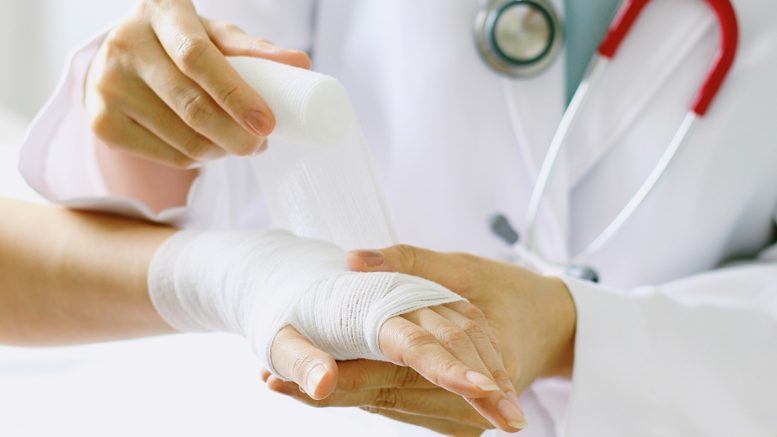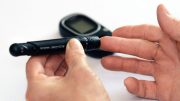Pain from chronic wounds such as venous leg ulcers (VLUs) causes considerable physical and mental distress to patients and poses major economic and therapeutic challenges for healthcare systems worldwide. To address this escalating burden, a growing evidence base is supporting the adoption of medical technology (MedTech) solutions that can offer the ability to effectively stimulate wound healing, coupled with the promise of improving treatment adherence. Medical devices are now being successfully harnessed in clinical practice to improve pain management and transform wound healing outcomes for patients.
The Burden of Chronic Wounds
The prevalence of chronic wounds, including leg ulcers, has reached epidemic proportions. Between one and three percent of adults above the age of 60 suffer from chronic leg ulcers, rising to over five percent in adults above 80 years old. Chronic wounds, like venous leg ulcers (VLU), are notoriously complex, slow to heal and difficult to treat, with many patients experiencing recurrences within a year of healing. This poses a significant physical and emotional burden to patients, and a wider financial burden on healthcare systems, costing the NHS approximately £2bn to treat every year.
As a result of chronic wounds, many patients experience discomfort, shame and social isolation, impacting their ability to take on everyday tasks. Perhaps the most debilitating result of chronic wounds is the ongoing pain patients live with due to the nature of chronic wounds and the treatment provided.
Leg Ulcers and Pain Management
Pain is the most reported symptom in VLU patients. In terms of pain intensity, up to 35 percent of patients with chronic VLUs suffer a pain intensity recorded at ≥5 out of 10 (10 being unbearable pain). However, managing persistent wound pain with opioid and non-opioid analgesics often proves inadequate, with patients struggling to access the right treatment or reporting it ineffective. Living with this pain negatively impacts the quality of life of wound patients and those who care for them. When combined with a lack of mobility and sleep, this can lead to a deterioration in mental health and have further consequences on patients’ physical health.
There are a number of direct factors that impact the experience of pain, including the severity of the injury and its management. Wounds UK revealed that negative emotions, such as anxiety, stress, depression, and a lack of control can all contribute to increased pain, indicating that psychological variables and pain management need to be recognised across wound care to improve healing outcomes.
Pain and Patient Adherence
The current standard of care for treating wounds like VLUs is compression therapy, which can come in the form of two or four-layer bandaging, wraps, or hosiery dressings. Compression therapy improves venous circulation and reduces swelling by squeezing the leg to promote blood flow back to the heart, accelerating wound healing and helping prevent infections.
However, overall patient adherence to compression therapy is low, estimated between 12 and 52%. Low adherence to compression therapy is often a result of patients being unable to tolerate the pain and discomfort caused by the pressure applied. At times, this can trigger patients to form a negative relationship with compression therapy, causing them to be less receptive to treatment, and delaying healing progress significantly.
Improving Pain Relief
According to the International Wound Journal, an estimated 50-60 percent of patients experience persistent wound pain, often as a result of failure to heal or lack of concordance with treatment. In some instances, patients may request lighter levels of compression to reduce pain, causing healing progress to slow or stop altogether, causing patients to experience wound pain for longer. However, by prioritising pain reduction, patients gain more trust in their treatment, fostering a more receptive attitude and speeding up the healing process significantly.
As the experience of pain is central for the wound patient, it should be for the healthcare professional also. To manage their ongoing pain, patients need to feel empowered to take control of their condition. Indeed, Wounds UK further revealed how the more control patients have in managing their condition, the less likely they could be to suffer from pain.
The Promise of MedTech
Fortunately, innovations in medical technology (MedTech), are providing adjunctive solutions to wound care that can be used alongside compression therapy to improve healing outcomes. For example, a small, non-invasive wearable device that promotes blood flow increase can be worn by patients with compression therapy. This results in enhanced oxygen and nutrient delivery to the wound bed and edge, clinically proven to reduce pain and accelerate wound healing.
This enhanced blood flow, provided by both compression therapy and a wearable medical device, puts less reliance on compression therapy alone. Combined, they successfully drive up adherence to standard of care, ensuring better patient outcomes.
With MedTech used in combination with compression therapy, patients can benefit from reduced pain, which subsequently gives them more confidence in their treatment and hope that their condition will improve. This positive outcome plays a huge role in patient adherence and improving the quality of life. By addressing pain and the emotional and physical impacts of chronic wounds on patients, MedTech promotes greater freedom, mobility and independence. This is especially true for devices that facilitate self-management, empowering patients to take ownership of elements of their care.
Investing in The Future
To improve patient adherence, healthcare systems are more than ever acknowledging that pain management is a crucial step of the wound-healing journey. The impact of deploying MedTech can be equally profound. Faster healing of wounds means less complications and fewer resources needed to deliver wound care. Within health systems, this results in substantially reduced costs, including a reduction in the requirements for home visits from community and remote nursing teams. By breaking the cycle of hard-to-heal chronic wounds, the growing use of medical devices represents a potential step-change in pain management and wound healing outcomes for patients everywhere who are affected by this complex, common – and increasingly prevalent – condition.
By Bernard Ross, CEO of Sky Medical Technology





